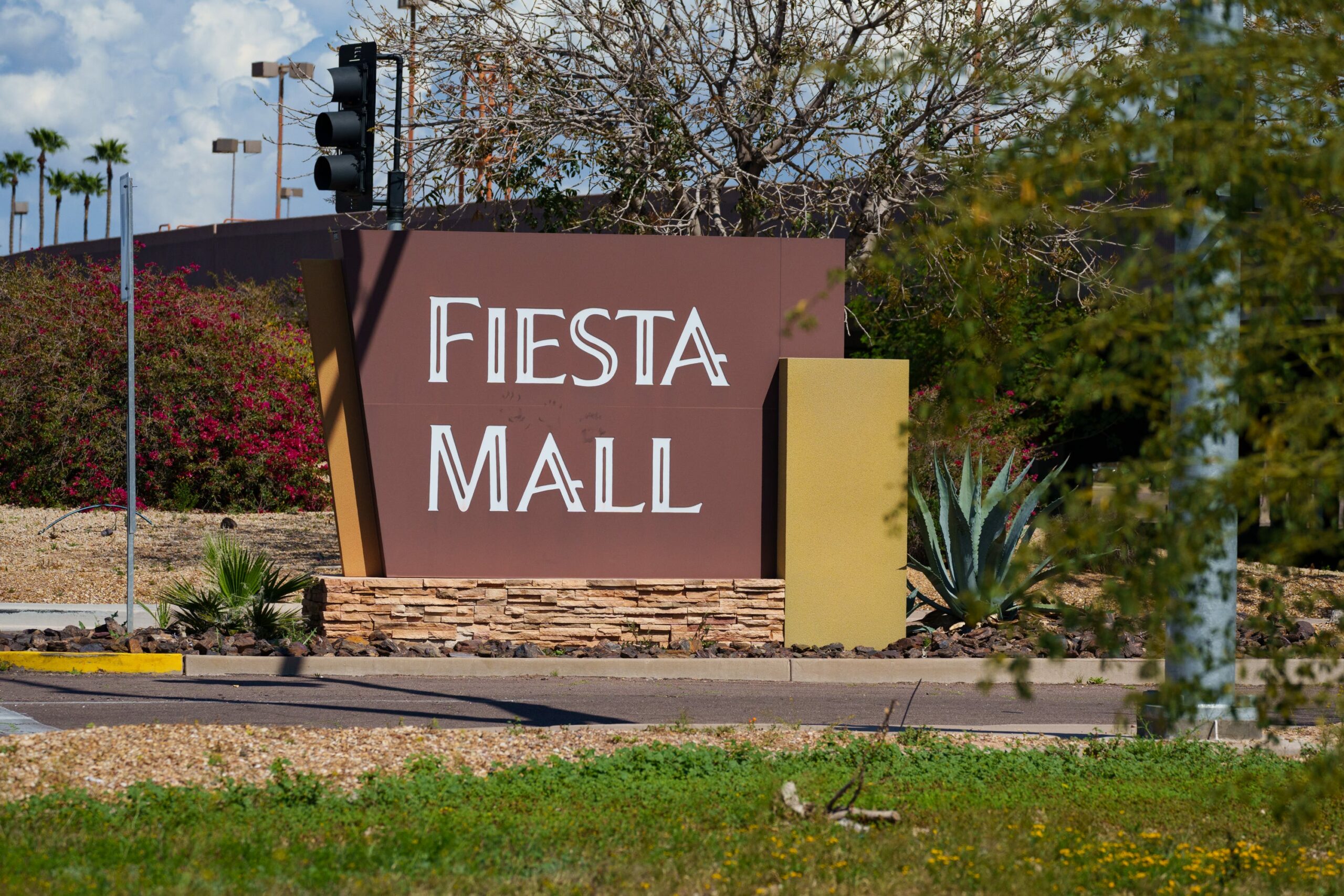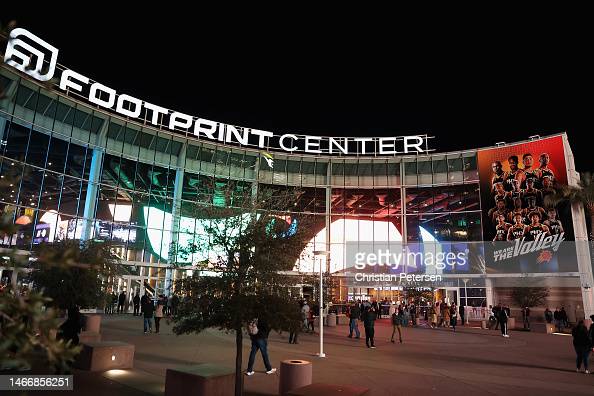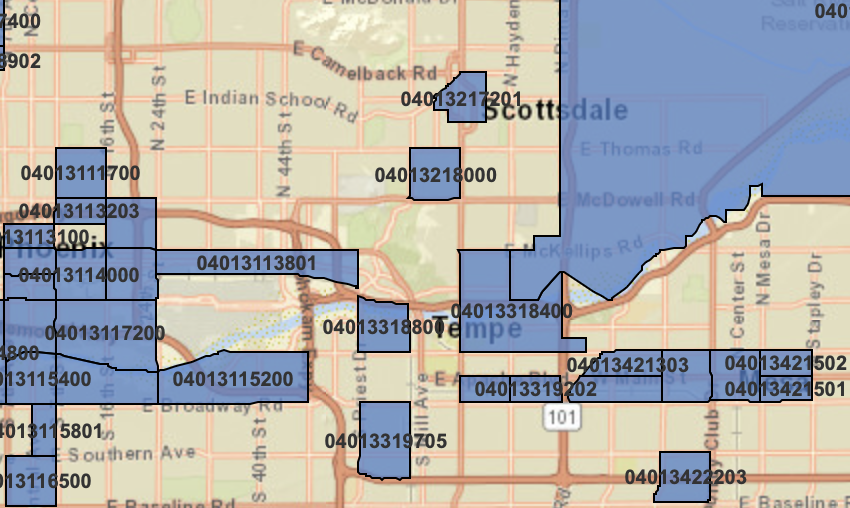© 2025 ALLCITY Network Inc.
All rights reserved.

There are four confirmed facts that impact the future of the Coyotes in Arizona.
First, team president and CEO Xavier A. Gutierrez confirmed on Friday that the team is not for sale.
Second, a league source confirmed this week that the NHL has no desire or plan to force owner Alex Meruelo to sell the team.
Third, despite reports to the contrary, the league has set no timetable on the Coyotes finding another arena solution in the Valley (more on this later).
Fourth, the league believes that there are several viable sites in the Valley for a new arena.
The latest reports have the Coyotes eyeing the former site of Fiesta Mall in Mesa, but there are other possibilities, some of which may offer better solutions.
Let’s take a look at some possibilities.

Fiesta Mall/Mesa
While recent reports have zeroed in on Fiesta Mall as a new possibility, the reality is that the possibility has existed for well over a year. When the Coyotes hired Gutierrez two years ago, he made it clear that his top priority was to find an arena solution. That meant exploring all available options in the Valley.
When the Coyotes decided that a longstanding dump site along the south bank of the Salt River in Tempe was the best choice, they turned all of their focus and messaging to that site, but early in that process, Gutierrez admitted that any sound business plan would also include backup options. The Coyotes kept those options close to the vest with only the upper levels of the organization aware of the possibilities. Gutierrez didn’t want any distractions and he didn’t want the City of Tempe to think that the franchise’s commitment was anything less than 100 percent.
Once one of the Valley’s key retail centers, Fiesta Mall closed in 2018. The entire area near Mesa Community College and the Banner Desert Medical Center is ripe for redevelopment. Verde Investments owns the land. In what is likely more than a coincidence, the chairman, president and founder of Verde Investments is Carvana CEO and co-founder Ernie Garcia, who also held an option on the land that the Coyotes tried to develop in Tempe.
Critics of this particular site contend that it is no better than the Coyotes’ problematic location in Glendale. Both sites are about 17 to 18 miles from the core of downtown Phoenix. The comparison isn’t entirely fair, however. A detailed report six years ago found that the vast majority of the Coyotes premium season-ticket and suite holders live on the east side of town, and Gutierrez confirmed that is still the case, with a significant number of those coming from the Southeast Valley communities of Chandler and Gilbert. Fiesta Mall would clearly be much closer to that fan base than Glendale. And while the location would prove challenging for north Scottsdale residents, it is, on average, about 10-15 miles closer than the Glendale arena.
While Fiesta Mall is about 11 miles to the southeast from the proposed Tempe site, there are other privately owned parcels available in Mesa along the Loop 202 Red Mountain freeway, and in other municipalities, which are closer to the original Tempe site.
Mesa Mayor John Giles told The Arizona Republic that he doesn’t foresee a scenario where a public vote would be necessary on privately owned parcels in Mesa because it would be a private development, but it’s not entirely clear how the deal would have to be structured to avoid that public vote.
Here is what the Mesa city charter says.

Tribal lands
The 101 corridor serves as a border of sorts between Scottsdale and the Salt River Pima-Maricopa Indian Community. Analysts have long viewed it as an ideal location for a Coyotes arena because of its location that splits the distance between north Scottsdale and the southeast Valley, in the heart of premium season-ticket holder country.
It’s no secret that tribal leadership has interest in bringing the Diamondbacks to tribal lands, but a source affiliated with the tribe confirmed that there is interest in possibly combining the two projects. An arena on tribal lands also would not require a public vote.
While the location looks ideal, there are numerous complications with building on tribal lands. First and foremost the tribe would likely want different ownership and the league and Coyotes have made it clear that Alex Meruelo is not selling the team.
There are also complications with sports gaming. While each of the Valley’s pro sports teams was granted a license last year, teams would not be permitted to operate sportsbooks on federal trust (reservation) land. There could be a workaround with a cooperative agreement between the team and the tribe, but it would almost certainly involve revenue sharing. The team could also potentially build a sportsbook adjacent to reservation land, separate from the arena.
While development around the arena could be controlled by the Coyotes, the team would not be permitted to own tribal land and it would not be permitted to build residences, a key part of the revenue model of this project. Use of the land would also require a long-term ground lease. The process to secure that lease is lengthy and often difficult to finalize. Depending on the size of the commercial parcel, it could take five to 10 years to entitle the property for development.
There are two types of land on the reservation; allotted land owned by multiple individual landowners, and tribal land owned by the tribe as a whole. The process could be vastly accelerated using tribal parcels, but 95 percent of the land in the commercial corridor is allotted and almost all tribal lands are already committed to gaming.

Footprint Center
The question comes up repeatedly: Why can’t the Coyotes just move back to Footprint Center, home of the Phoenix Suns? It was, after all, where the Coyotes began their Valley tenure in 1996.
There are several reasons. First, they left then-America West Arena for a specific reason. They could not make it work financially as a tenant in an NBA arena. If you look around North America at shared NBA-NHL arenas, none of those involve an NHL team being a tenant in an NBA-owned arena. The NHL team either owns the building or the same owner owns both the NBA and NHL teams. Why?
“Hockey was and is an arena sport,” former Coyotes owner Richard Burke said. “Most of your revenue comes from what happens in your building; not like other major sports from television, radio, etc. It is tickets (the high-end ones), suites, concessions, building naming rights, sponsorships, et al.
“When I bought the team, the average league salary was $17 million; when I sold it, it was $44 million. Our breakeven at America West Arena was $29 million, which we exceeded after three years.”
Put simply, the only way that the Coyotes could go back to Footprint Center would be if new Suns owner Mat Ishbia were to buy the Coyotes. A spokesperson for the Suns confirmed to PHNX Sports that if the NHL and the Coyotes ever wanted to have discussions with the Suns, they would be available to have those conversations, but again the Coyotes are not for sale.
If that were to change, Footprint Center would need another major renovation to house the NHL. The facility was only built for basketball. As a result, the north end has about 4,500 seats that would offer obstructed views of the ice. Renovations would also require the building of new dressing rooms for the Coyotes and visiting teams (the old ones are gone), the installation of an ice plant and ice, as well as other changes. To top it off, the most recent renovations would make fitting an ice sheet in the building even more difficult because of further incursions into the lower bowl.
Recent estimates have suggested that the price for such renovations would be around $200 million. It’s unclear how long those renovations would take, but if they required more than the typical roughly five months of offseason, that would necessitate the Suns playing elsewhere for some games.
Again, this possibility isn’t on the table because the Coyotes are not for sale, but if the Meruelo ownership group can’t find an arena solution soon, you have to wonder if NHL Commissioner Gary Bettman would make the call to Ishbia.
County islands
This is an interesting possibility. While the Mesa mayor believes none of the proposed and privately-owned sites in his city would require a public vote, there are provisions within the city charter that would necessitate that vote. The Coyotes would have to find a workaround because they absolutely do not want another project going to a public vote, given the current political climate and the resounding rejection that Tempe voters gave the team’s most recent proposal.
If the Coyotes were, however, to choose a county island, the threat of a public vote would be nominal. There is a provision by which Maricopa County could hold a county-wide referendum, but it is extremely rare and the signature threshold to put it on the ballot is very high.
There are several county islands that sit closer to the proposed Tempe site, including one to the northeast of the Loop 202 and Rural Road, and one farther east along the Salt River near Sloan Park and the Chicago Cubs’ training facility. In a weird twist, the land where recently demolished Oceanside Ice Arena sat is also a county island.
There are two main issues with county islands. First, they are privately owned and sometimes parceled between multiple owners, as is the case with the first plot mentioned near Tempe. The Coyotes would have to negotiate a purchase of the land from the landowner. Clearly, the more owners, the trickier the process becomes.
The second issue is that whatever site the Coyotes choose, they will need tax abatements. That process is particularly complicated on county islands, but Thomas Galvin, who represents District 2 on the Maricopa County Board of Supervisors, is open to facilitating a deal.
“If the team and whoever was the property owner had a serious proposal, I would love to listen and be all ears,” said Galvin, who is a Coyotes fan. “I have an open mind. Coming from the private business world, I’m a dealmaker and love to see win-wins. If there’s a project that is going to be an economic boon for the East Valley, I’m all for it.
“I am a fan of hockey, I’m a fan of sports and I’m a fan of the Valley. I want to express a lot of support for Coyotes fans who are hurting right now. I think it’s a shame that people were gleeful in the demise of this project just because they like to take shots at an organization or a sport. I have a lot of respect for hockey. I have a lot of respect for hockey fans and I think hockey is great for the Valley. I want to see it stay here for decades to come.”
Opportunity zones
Congress created opportunity zones as part of the Tax Cuts and Jobs Act of 2017 to increase investments in housing and real estate in underdeveloped or low-income areas of the United States. The act grants the Internal Revenue Service (IRS) the authority to designate “Opportunity Zones” and give specific tax incentives to investors for improving these zones.
Here is a list of opportunity zones in Maricopa County, several of which fall within the geographical location where the Coyotes would logically want to build.

Again, no timeline has been set by the league for when the Coyotes must present a new plan, but with the NHL Board of Governors and the NHLPA already unhappy with the current situation, it is fair to assume that the Coyotes must put a proposal on the table in the next several months.
We already know that the Coyotes will play at Mullett Arena next season and the original plan was to be there through the 2025-26 season. It will take time to put together a new deal, and it will take time to build a new arena, but it’s hard to imagine the BOG and NHLPA extending the grace period beyond that original timeline.
PHNX Sports’ Gerald Bourguet contributed to this story
Follow Craig Morgan on Twitter
Comments
Share your thoughts
Join the conversation



